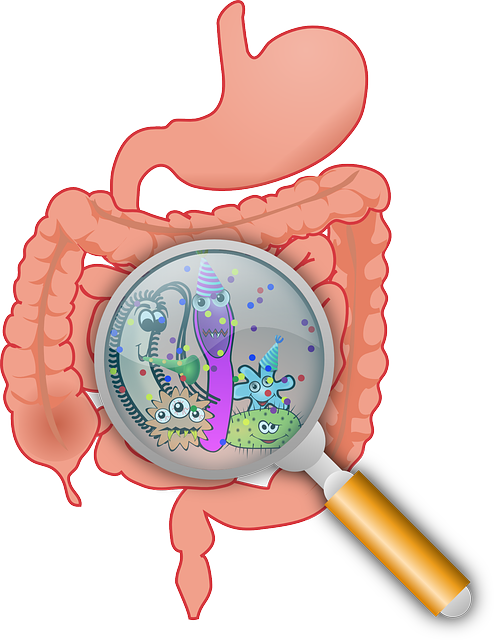
En ny vetenskaplig artikel visar på sambandet mellan lungfunktion och tarmhälsa.
I artikeln belyser man bl.a.:
- accumulating evidence supports the hypothesis that an altered gut microbiota and an associated leaky gut may contribute to the onset of coronavirus disease 2019 (COVID-19)-related gastrointestinal symptoms, such as diarrhea and, in severe cases, multiorgan complications.
- Testing for a leaky gut and fecal and plasma viral loads may be useful for diagnosing the seriously ill or for preventing transmission by fecal shedding of the virus.
- Fecal microbiota transplantation (FMT), next-generation probiotics focusing on butyrate-producing gut microbes, or simply increasing the daily intake of dietary fiber may be considered in improving the gut health of COVID-19 patients.
Andningssjukdomar har blivit ett världsomspännande problem, särskilt på grund av specifika virus (tex CoV-SARS-2) som inte bara orsakar hög feber och andningsbesvär för människor över hela världen; utan också diarré, illamående och kräkningar. Vilket tyder på att mag-tarmkanalen också kan påverkas.
Tidigare studier har visat att personer med underliggande kroniska tillstånd och hög ålder har högre risk för infektion av dessa virus, men de kan också ha förändrad tarmflora. Denna obalans kan försämra tarmbarriärens, så att patogener når celler i och runt tarmslemhinnan.
Många nya studier har funnit lägre bakteriediversitet (sämre bredd i tarmbakterier) i avföringsprover hos patienter som är mottagliga för infektion. Dessutom finns det en utarmning av fördelaktiga bakteriearter. En sådan obalans ser man även hos influensa-patienter.
Utarmningen av bakteriearter inkluderar några familjer som är ansvariga för att producera butyrat, en kortkedjig fettsyra som spelar en viktig roll för att stärka tarmbarriärfunktionen (Läs det populära inlägg som jag skrev för ett par veckor sedan här om butyrat och andra kortkedjade fettsyror: https://4health.se/kortkedjade-fettsyror-scfa-short-chain-fatty-acids-huvudspelare-i-samspelet-mellan-kost-tarmflora-och-halsa .) Nyckelfamiljerna var Ruminococcaceae eller Lachnospiracaea, som inkluderar arten F. prausnitzii, och tillhör klassen Clostridia.
Artikeln belyser också studier som visar en stark korrelation mellan lunghälsa och fiber (grönsaker mm) i kosten. Och att ledande forskare föreslår att ökat fiberintag kan vara fördelaktigt eftersom det hjälper till att öka butyratnivåerna i mag-tarmkanalen.
Ur artikeln:
…”there is also high individual-level variation attributable to elderliness and certain underlying medical conditions, including high blood pressure, diabetes, and obesity. As both elderliness and the aforementioned chronic conditions are often associated with an altered gut microbiota, resulting in disrupted gut barrier integrity, and gut symptoms have consistently been associated with more severe illness in COVID-19 patients, it is possible that dysfunction of the gut as a whole influences COVID-19 severity. This article summarizes the accumulating evidence that supports the hypothesis that an altered gut microbiota and its associated leaky gut may contribute to the onset of gastrointestinal symptoms and occasionally to additional multiorgan complications that may lead to severe illness by allowing leakage of the causative coronavirus into the circulatory system.”
Lite ur de andra studier /artiklar jag hänvisar till:
“Notably, some patients have nausea/vomiting as the first clinical manifestation of COVID-19, which is often overlooked by people. It is now clear that not only the lungs, the gastrointestinal tract could also be attacked by SARS-CoV-2. Its host receptor angiotensin-converting enzyme 2 (ACE2), which acts as a gateway to infection, has been found to be highly expressed in the gastrointestinal epithelium and may lead to the development of nausea/vomiting.”
“COVID-19 patients had significantly reduced bacterial diversity; a significantly higher relative abundance of opportunistic pathogens, such as Streptococcus, Rothia, Veillonella, and Actinomyces; and a lower relative abundance of beneficial symbionts. Five biomarkers showed high accuracy for distinguishing COVID-19 patients from HCs with an area under the curve (AUC) up to 0.89. Patients with H1N1 displayed lower diversity and different overall microbial composition compared with COVID-19 patients. “
https://journals.asm.org/doi/10.1128/mbio.03022-20?permanently=true&
https://pubmed.ncbi.nlm.nih.gov/32671115/
https://www.ncbi.nlm.nih.gov/pmc/articles/PMC7568482/
https://pubmed.ncbi.nlm.nih.gov/33328263/
https://www.cdc.gov/coronavirus/2019-ncov/need-extra-precautions/people-with-medical-conditions.html
https://academic.oup.com/cid/article/71/10/2669/5851452
https://aspenjournals.onlinelibrary.wiley.com/doi/abs/10.1002/jpen.1715

Lämna ett svar